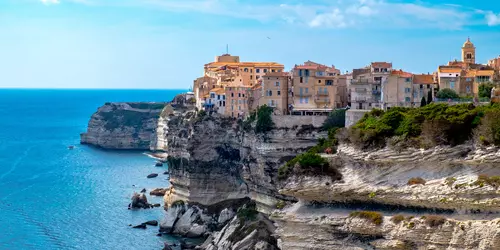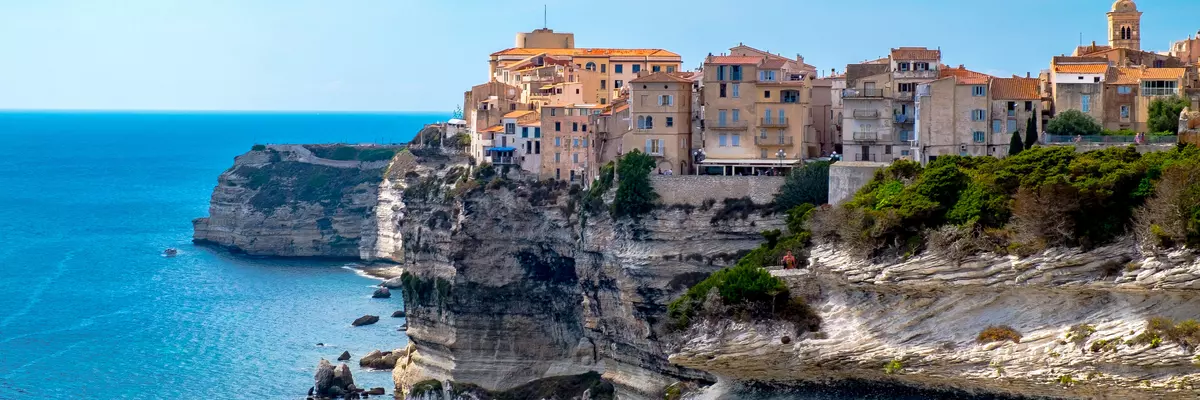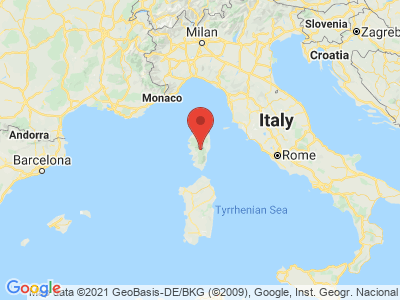Climate Table Corsica
Jan | Feb | Mar | Apr | May | Jun | Jul | Aug | Sep | Oct | Nov | Dec | |
|---|---|---|---|---|---|---|---|---|---|---|---|---|
| Max. Temperature | 13° | 14° | 16° | 18° | 21° | 25° | 27° | 28° | 26° | 22° | 18° | 15° |
| Min. Temperature | 3° | 4° | 5° | 7° | 10° | 14° | 16° | 16° | 15° | 11° | 7° | 4° |
| Sun Hours | 4 | 5 | 6 | 8 | 10 | 11 | 12 | 11 | 9 | 7 | 5 | 4 |
| Water Temperature | 13° | 13° | 13° | 14° | 16° | 20° | 22° | 23° | 22° | 20° | 17° | 15° |
| Rain Days | 8 | 7 | 6 | 7 | 6 | 2 | 1 | 1 | 4 | 7 | 9 | 9 |
The climate year of Corsica
Corsica is the fourth largest island in the Mediterranean, after Sicily, Sardinia and Cyprus, with an area of approx. 9.000 km² and 320.000 inhabitants. The coast has a total length of 1000 km, consists of sandy bays and one third rock. In winter, the Mediterranean Sea acts as a heat reservoir and air temperatures can range from 13°C to 24°C - but only in the coastal regions. The island is altogether very mountainous, some mountains grow directly out of the water and only on the eastern side there is a flat strip about 10 km wide. Like the Alps, the island was formed in the Tertiary period, has a granite base and in the east a bedrock of slate. 50 two-thousand-meter peaks rise into the sky, the highest being Monte Cinto at 2706 m and only 24 km from the coast.
General information about Corsica
Already in spring the first festivals take place, because the resorts are already well occupied around the time of Easter. Many visitors combine the stay at the beach areas with hikes in the mountains and discover the unique blossoms. Those who visit the city of Bastia are surprised by narrow streets of baroque and Genoese architecture. On Rue Napoléon you will find specialized stores with local products but also large department stores and all kinds of restaurants. The east coast is lined with beaches and beautiful pine groves. Here the visitor experiences vastness and freedom, sea and sun. The most visited city in Corsica, Bonifacio, is located in the far south and was built on a chalk cliff. The origins of Corsica are experienced by the tourist in the area of Sartenais, Valinco and Taravo with prehistoric sites and remains of castles of the feudal lords. The west, with its coast of red granite rocks rising directly from the blue waters, has been declared a World Heritage Site by UNESCO.
Tourism Corsica
With 2750 hours of sunshine a year, the sun shines longer on the island than on mainland France. There are hardly any rainy days in summer on the coast, but the amount of precipitation increases with altitude, and at 2000 m, four times as much rain falls in the year as on the coast. Spring has temperatures between 15°C and 20°C on the coast, but it can still get very fresh at night. In June, the thermometer rises to around 25°C, until July and August, when it can get very hot with over 30°C, cooling down a little only due to thundershowers. Autumn is very similar to spring in terms of temperature and winter has daytime temperatures of around 12°C on the coast with night frosts possibly occurring. In the mountains it snows regularly and winter sports are possible until late spring.


